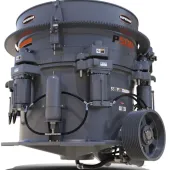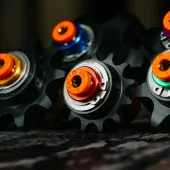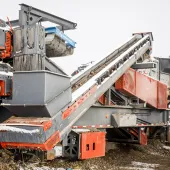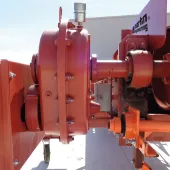Martin Engineering introduce new secondary belt cleaner

Latest Pin Latch belt cleaner offers ease of maintenance and enhanced cleaning performance
MARTIN Engineering have launched a new tungsten carbide-tipped secondary cleaner that slides in and out for service without requiring any tools. The company’s latest Pin Latch secondary belt cleaner features a square, tabbed mainframe with segmented blades connected by a simple pin mechanism, allowing easy access and quick blade replacement by semi-skilled personnel.
The pin latch design is said to provide adjustable tension for varying conditions, such as belt speed, material being conveyed and belt cleaner position relative to the head pulley. It will handle belt speeds up to 1,000 ft/min (5.1m/sec) and the versatile unit accommodates belt rollback.
The carbide tip is both acid- and abrasion-resistant, and assembly is well suited for use on belts with mechanical splices, smoothly adapting to and riding over the splices without damaging the splice, belt or blade.
‘The maintenance-friendly design of the new Pin Latch belt cleaner is engineered for a wide range of global applications,’ commented Pieter Opperman, South Africa sales manager for Martin Engineering. ‘It can drastically reduce downtime for service or replacement, since no alignment or setting of the blade is required. Inventory is reduced to a one-part blade and buffer, without bolts, nuts or other fasteners.’
Mr Opperman added that blade replacements could be performed with a greatly reduced risk of errors while the narrow blades conform readily to conveyor belt profiles. ‘The quick replacement of this design means shorter shutdowns and reduced maintenance time,’ he continued. ‘That translates to more productive and profitable operations, with personnel able to concentrate more on core activities.’
The Martin Pin Latch secondary belt cleaner is said to deliver superior cleaning performance with quicker blade recovery and offers the versatility to adjust blade performance to match a wide range of applications. It is considered by the company to be a preferred upgrade for Martin SQC2 and SC16 secondary cleaners.
‘Matching the blade performance to the unique conditions of a specific application is a key to maximizing efficiency,’ said Mr Opperman. ‘And servicing these units simply requires sliding the pin out and removing the old blades by hand. New blades are slipped on to the mainframe and the pin is re-inserted through the new blades.’









